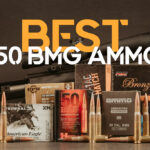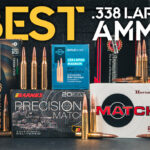
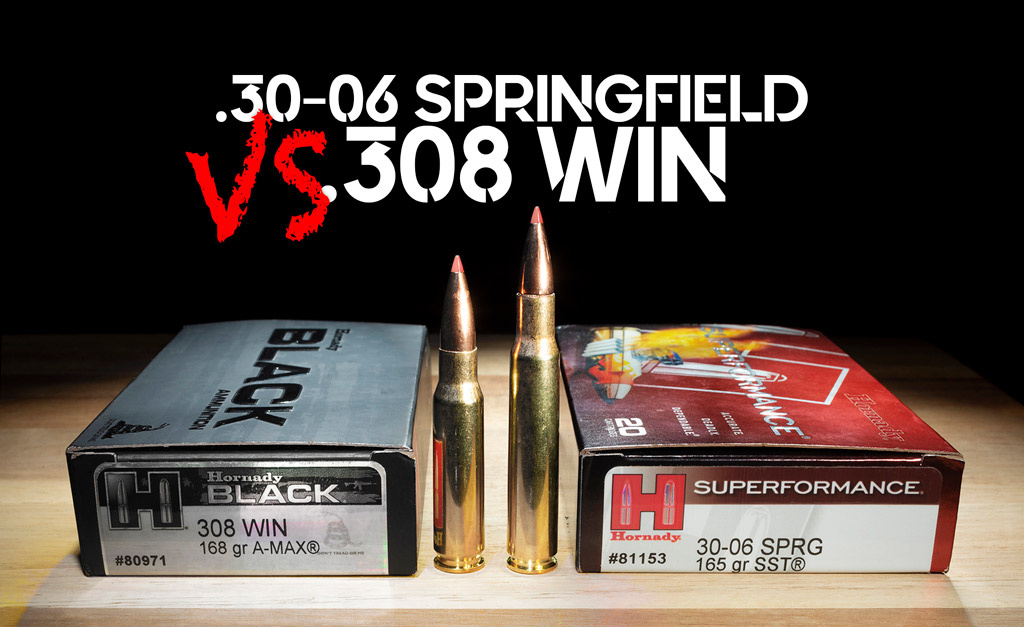
By Guy J. Sagi
Though the .30-06 Springfield has reigned supreme over other whitetail deer-hunting cartridges for decades, its title may be in danger. There have been coup attempts before, certainly. Yet the overwhelming number of rifles chambered for the .30-06 is a stout defense, one deeply supported by owners comfortable with its performance. Still, a serious contender gathers momentum with each AR-10 fielded on opening day. Despite the ballistic advantages of some newer cartridges, it looks like the battle for the crown is destined to occur between old-timers 30-06 vs 308.
Either cartridge is excellent for filling tags, punching paper, ringing steel at distance, or firing-line fun. Their military pedigrees guarantee unfailing performance, and they’re both available in loads suited for every shooting passion.
| Cartridge Specs | .30-06 Sprg. | .308 Win |
|---|---|---|
| Parent Casing | .30-03 Sprg. | .300 Savage |
| Bullet Diameter | .308″ | .308″ |
| Neck Diameter | .340″ | .3433″ |
| Base Diameter | .471″ | .4709″ |
| Case Length | 2.494″ | 2.015″ |
| Overall Length | 3.34″ | 2.8″ |
| Grain Weight | 125gr-220gr | 110gr-180gr |
| Max Pressure (SAMMI) | 60,000 PSI | 62,000 PSI |
Their similarities are striking. Both cartridges use bullets with a .308-inch diameter. When ammunition shortages happen, manufacturers put them on their high-priority list—so they were available long before most others reappeared. There’s no shortage of factory-fresh bolt-action rifles from major manufacturers, and only a rare gun shop doesn’t have a nice selection of used models.
The case shapes are not identical, however. The .30-06 is “taller,” measuring slightly more than 3 1/3 inches long. A .308 comes in at 2.8”. The latter runs in short-action rifles and is the most common chambering in AR-10s. The thirty-aught-six requires a heavier long-action. So far, only a few boutique manufacturers produce AR-10s in that chambering. Despite those facts, their performance downrange is well within the standard deviation of shooter skill.
Ballistics: 30-06 vs 308
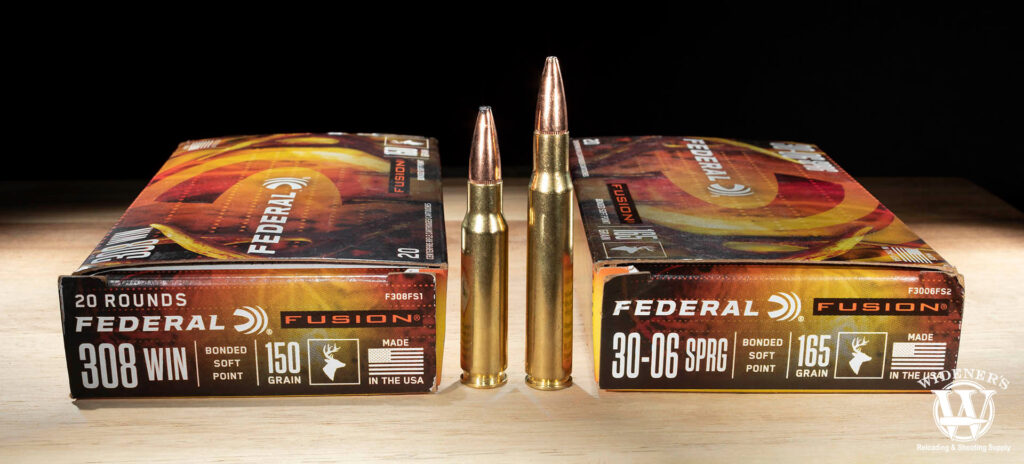
King of the hill: Who comes out on top when comparing 30-06 vs 308 ammo?
Both cartridges commonly wear the same bullets, providing a solid comparison without variables in exterior ballistics that might confuse the figures. Federal chose not to mix manufacturer methodology because they don’t always use the same barrel length, rifling rate, or identical atmospheric conditions. Federal Premium’s data provides a solid, side-by-side look at the pair. The company designed its Fusion line for whitetail deer and offers only three .30-06 Springfield loads. However, there are four .308 Winchester offerings, another hint that a showdown is looming.
| Caliber | Bullet Type | Bullet Weight | Velocity (Muzzle) | Energy (Muzzle) | 100 Yards (Velocity/Energy) | 200 Yards (Velocity/Energy) | 300 Yards (Velocity/Energy) |
|---|---|---|---|---|---|---|---|
| .30-06 | Bonded SP | 150gr | 2,900 FPS | 2,801 FT LBS | 2,674 FPS/2,382 FT LBS | 2,459 FPS/2,014 FT LBS | 2,254 FPS/1,693 FT LBS |
| .308 Win | Bonded SP | 150gr | 2,820 FPS | 2,648 FT LBS | 2,600 FPS/2,252 FT LBS | 2,391 FPS/1,903 FT LBS | 2,191 FPS/1,599 FT LBS |
What About Muzzle Velocity?

The .30-06 Sprg. has the same bullet diameter as the .308 Win., however, its longer case length makes it a long-action cartridge.
The muzzle velocity of a 165-grain Fusion soft-point bullet launched from the company’s test .30-06 Springfield rifle is 2,790 fps. From the .308 Winchester, the same grain weight projectile leaves the gun at 2,700 fps. If we drop down to a 150-grain Fusion soft-point bullet, the .30-06 velocity increases by 110 to 2,900 FPS. In comparison, the .308 Win increases by 120 up to 2,820 FPS. All things being equal, these numbers are similar for any head-to-head comparison between various ammo types for 30-06 vs 308.
Vintage VS Modern
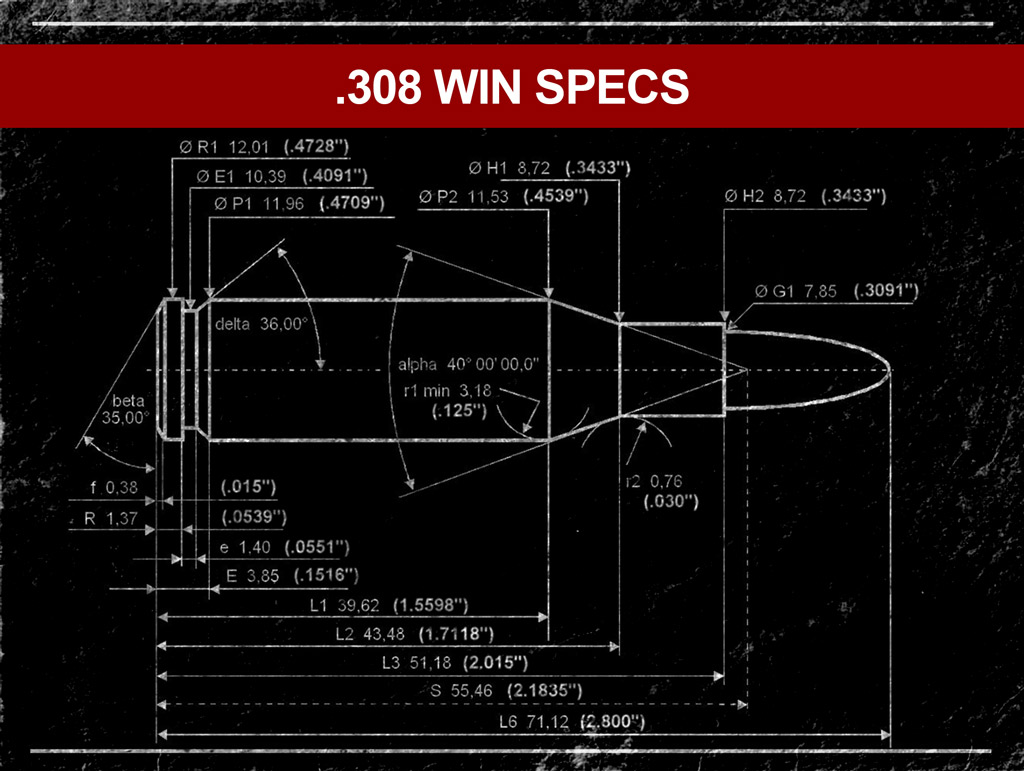
The .308 Winchester is a short-action cartridge with a reduced powder capacity compared to the .30-06 Sprg.
The .30-06 Sprg. leaves the muzzle faster, and holds onto more energy as it travels down range. Of course, there’s more to the story. If you’re shooting an older .30-06 Sprg. military service rifle, like the M1 Garand, you should be using ammo that is safe for it to fire. The high pressure of certain modern .30-06 Sprg. cartridges can damage the rifle and be unsafe to shoot. Several manufacturers make M1 Garand specific .30-06 Sprg. loads. Hornady’s Vintage Match 168-grain ELD features velocities more in line with the .308 Win.
Modern barrels and ballistics make the comparison even more difficult. The folks over at Bergara make some mighty fine rifle barrels and long guns. In their B-14 Ridge line of rifles, they offer both caliber options in 20″ (.308 WIN), and 24″ (.30-06 Sprg.) for hunters looking for an excellent bolt-action. Both barrel options have a 1:10 twist rate, making them ideal for sending stabilized projectiles in the 175-200-grain weight range. With similar optics and ammo, you’d be hard-pressed to spot a difference in performance between either option out to 300-yards.
Bullet Drop
With both zeroed at 100 yards, the drop at 300 yards varies by 1.3 inches. The Springfield drops 13.4” and the Winchester 14.7”. The energy at that distance for the 150-grain bullet is 1,693 (Springfield) and 1,559 ft./lbs (Winchester). Slight advantage in drop to the Springfield at that distance, and beyond.
As expected, the .30-06 finishes first, though the margin is closer than most expect from its larger size. The .308 Winchester’s additional drop of 1.3 inches at 300 yards is roughly .43 MOA. That’s undetectable for most hunters, even when conditions are ideal from a solid rest. At 500 yards, the elevation difference (with 200-yard zero) is 4.1 inches, with the Springfield version dropping 46 inches versus 50.1 for the Winchester.
Wind Drift Considerations
At 500 yards in a 10-mph full-value breeze, both cartridges perform similarly.
- The 30-06 Springfield moves 20.7 inches and delivers 1,287ft./lbs of energy.
- The .308 Winchester shifts 22.3 inches and delivers 1,173 ft./lbs of energy.
Again, slight advantage to the Springfield in this category comparison, and something to consider if you’re a long-range shooter.
Closing The Gap
A look at Federal’s Gold Medal lineup indicates the neck-and-neck race is not exclusive to hunting loads. Both cartridges are available with Sierra’s famed 168-grain MatchKing Bullet. The .30-06 Springfield version launches it at 2,700 fps and the .308 Winchester at 2,650. With a 200-yard zero, the drop at 500 is 49.2 and 51.5 inches—a 2.3-inch difference at five football field lengths.
Remember that reduced powder charge is common in loads designed for precision matches. This approach drops the standard deviation in muzzle velocity, thus tightening groups. Regardless, the figure speaks volumes about the projectile’s streamlined ballistic coefficient and the variety of purposes both cartridges fulfill with enviable performance.
30-06 vs 308: Diversity Of Options

Many manufacturers offer centerfire performance ammo in both . 30-06 Springfield and .308 Winchester options.
The broad range of offerings from Hornady underscores the diversity in both cartridges. The company makes twenty-two .308 Win. loads and fourteen in .30-06 Sprg. Another inventory with competitive implications.
Hornady makes a Black line designed to work flawlessly in direct gas impingement or piston-driven AR-10s—with or without a suppressor. The performance is identical or better from bolt-action rifles or other semi-autos. One of them is a .308 Winchester with a 168-grain A-Max load that launches the bullet at 2,700 fps. Zeroed at 200 yards, the drop is 48.9 inches at 500 yards. The energy at that distance is 1,261 ft./lbs. The other wears a 155-grain A-Max bullet, with a 2,850fps muzzle velocity and drop at 500 yards—with the same zero—is 44.9 inches. There are no Black loads available in .30-06 Springfield.
Suitable for most big game in North America, the company’s Superformance line is available in both chamberings. Its .308 Winchester options include a 150-grain SST bullet, 165-grain CX, 168-grain ELX (Superformance Match), and a 165-grain SST. Muzzle velocity for the latter comes in at 2,840 fps, and drop at 500 yards is just 44.6 inches.
| Caliber | Bullet Type | Bullet Weight | Velocity (Muzzle) | Energy (Muzzle) | 100 Yards (Velocity/Energy) | 200 Yards (Velocity/Energy) | 300 Yards (Velocity/Energy) |
|---|---|---|---|---|---|---|---|
| .30-06 | SST Polymer Tip | 165gr | 2,960 FPS | 3,209 FT LBS | 2,750 FPS/2,769 FT LBS | 2,549 FPS/2,380 FT LBS | 2,357 FPS/2,034 FT LBS |
| .308 Win | SST Polymer Tip | 165gr | 2,840 FPS | 2,955 FT LBS | 2,635 FPS/2,544 FT LBS | 2,439 FPS/2,180 FT LBS | 2,252 FPS/1,858 FT LBS |
Despite the reduced loads available in .30-06 Springfield, Hornady offers bullet weights in both cartridges ranging from light 125-grains to a dangerous-game-stopping 220-grain SST load. There are budget-friendly FMJ cartridges made by Prvi-Partizan, plus a long list from Winchester, Remington, Barnes, and Fiocchi. There’s something in both .308 Winchester and .30-06 Springfield ideal for every passion.
Not Quite Equal
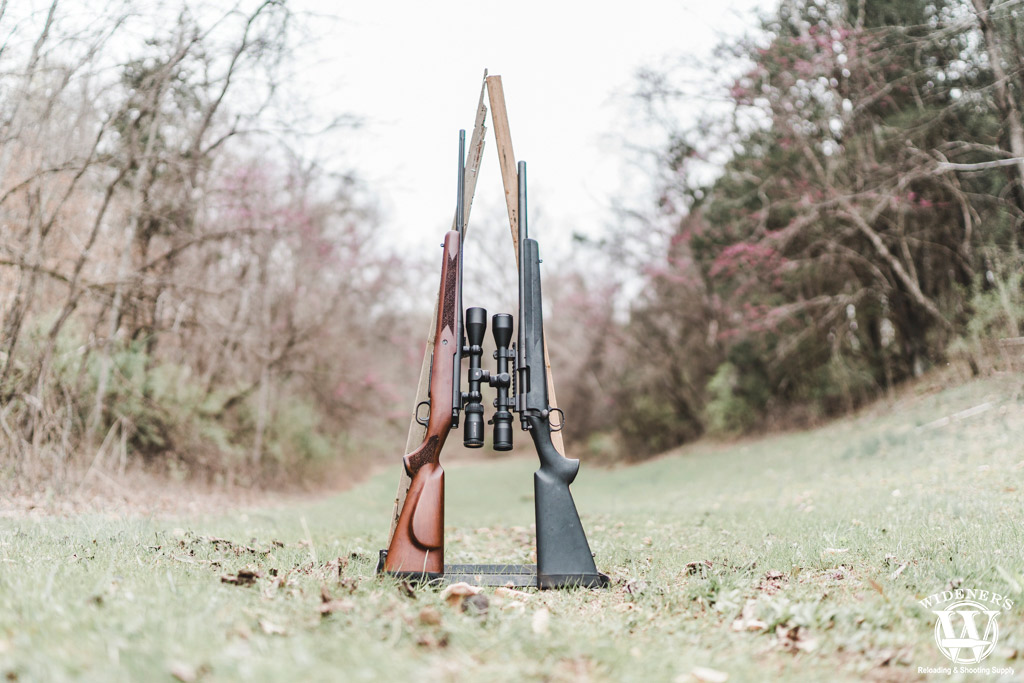
There’s no shortage of .30-06 rifles (Left) on the market, however, more options chambered in .308 Win (Right) are available.
The nod goes to the .30-06 Springfield when it comes to exterior ballistics. Still, the slight edge diminishes as unexpected storms and unseen crosswinds blow in with whitetail season. However, skilled enthusiasts and competitors understand the larger cartridge’s benefits and routinely harness them to their advantage.
Is it enough for the .30-06 Springfield to remain atop the throne? More than just the rising popularity of modern sporting rifles is threatening its reign.
The once well-stocked fleet of surplus rifles chambered in .30-06 Sprg. is diminishing quickly. Those that haven’t been “sporterized” have reached a vintage status, and the prices they demand increase daily. Add the number of new cartridges and chamberings, diluting the king’s “pool” of firearms, and the kingdom shrinks slightly each year.
The good news is, large gun makers still offer factory-fresh rifle options for the cartridge. As long as interest in the cartridge remains, the legend will continue and a new generation of shooters will have the chance to experience its match-winning and game-getting performance.
The .308 Win. is celebrating its 70th birthday this year. The .30-06 Sprg. is 116 years old. Despite the generation gap, they share a military history that explains some of their striking similarities and why they continue to thrive to this day.
A Shared Military Background
The U.S. military’s Springfield Armory developed the .30-06 Springfield cartridge. Our armed forces fully adopted the “.30” caliber in 1906—hence the .30-06 Sprg. industry shorthand. It was a vast improvement over its predecessors and found its way into bolt-action M1903 Springfields, light machine guns, and even the famed M1 Garand.
The .30-06 Springfield did yeoman’s service during World War I, II, and Korea. Full fielding of M16s toward the end of Vietnam resulted in its retirement when 5.56 NATO took over. 5.56’s manageable recoil meant quick follow-up shots, a virtue that kept it on the front lines for so long and sportsmen still appreciate today.
As dictated by the laws of physics, the recoil figures are still stouter than the .308 Winchester. Various factors determine how much makes its way back to the shoulder, and the (on average) added weight of a long action ultimately reduces it.
Winchester introduced the .308 Win. to civilian enthusiasts in 1952, and two years later, the U.S. military adopted it in a slightly modified form. Today, that reduced-pressure 7.62 NATO cartridge runs without problems in .308 Win.-chambered guns. Bolt-action precision rifles, semi-automatics, and light machine guns in that chambering have seen frontline duty through the global war on terrorism and still stand guard on the front lines of freedom. The calculated recoil is less than the .30-06 Springfield. Perceived recoil depends on the platform, but is significantly lower in semi-automatics like the AR-10.
30-06 vs 308 Clear Winner?
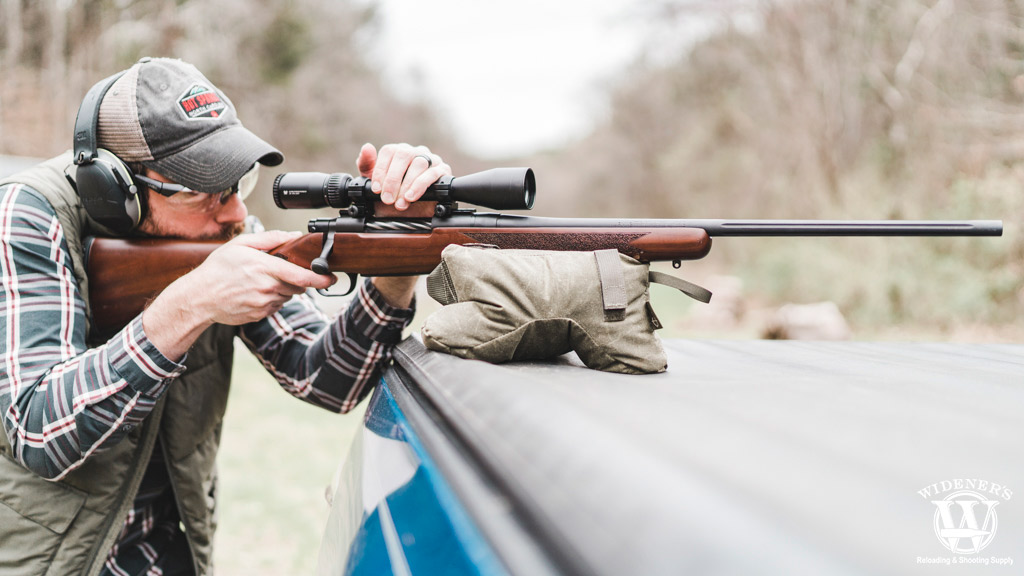
More than one hundred years after its introduction, the .30-06 Springfield holds its own against the upstart .308 Win.
Because the performance between the cartridges is similar, there is no clear winner in a direct 30-06 vs 308 comparison. The 30-06 has a slight advantage in muzzle velocity, but not enough to make the case that it’s superior. There’s no denying .30-06 Springfield flies flatter, gets across the finish line first, and delivers more energy. However, as a weapon platform, it’s also largely stuck in the previous century.
The .308 Win on the other hand offers the best of both worlds for centerfire ammunition. You get the performance of a .30 caliber bullet in a more compact package. Not to mention, it’s cheaper in price (on average, including reloading), and more readily available in a wide variety of options. When you consider the number of weapon platforms it’s compatible with, the .30-06 Springfield starts to look like a secondary option.
It’s a photo finish—however, some of the subtler advantages of the .308 Win. show us the winner. It occupies less space and weighs less. Perhaps more importantly, its performance in the hands of our nation’s snipers is legendary. If you look at the in-stock inventory of caliber options for both, it’s clear which option the general public prefers. Gun owners invest in what they believe in, and their faith is heavily vested in the .308 Win.
What will the future hold? It probably won’t be this year or the next, but as AR-10s keep getting more popular, .308 Winchester will grow to dominate whitetail hunting seasons. Both in bolt guns and semi-automatics. However, don’t expect the .30-06 Springfield cartridge to go anywhere. It’s likely to outlast our lifetime and continue to be enjoyed by future generations. In the meantime, with the number of available loads, cost-efficient bulk ammo, and ample manufacturer supply you can’t go wrong with enjoying either option.


